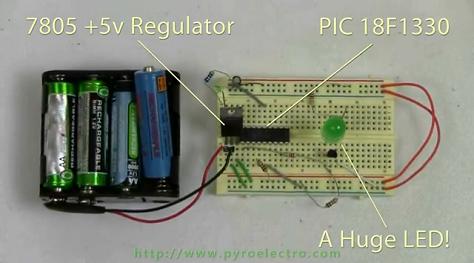Project Info
Author: Chris
Difficulty: Easy
Time Invested: 2 Hours
Prerequisites:
Take a look at the above
articles before continuing
to read this article.
Author: Chris
Difficulty: Easy
Time Invested: 2 Hours
Prerequisites:
Take a look at the above
articles before continuing
to read this article.
This article will focus on how to use digital PWM (Pulse width Modulation) to vary the light intensity of an LED in order to create an awesome fading effect. A small microcontroller will be used to send out the custom PWM signal for fading the led light intensity in and out.

Purpose & Overview of this project
The goal of this project is to create an LED controller that can fade the brightness level of an LED (light-emitting-diode) with a smooth transition. Since light intensity increases in a logrithmic fashion, we'll need to pay extra attention to the theory section of this article to make sure the brightness transitions move smoothly.
To build this LED controller we will use only the most basic of parts to ensure that anyone can duplicate this controller with minimal investment of time and money. The PIC 18F1330 microcontroller will be used for all the intelligent digital work and some standard LEDs will be used for testing out how well the LED fader works. Continue to the next section to see the complete parts list.